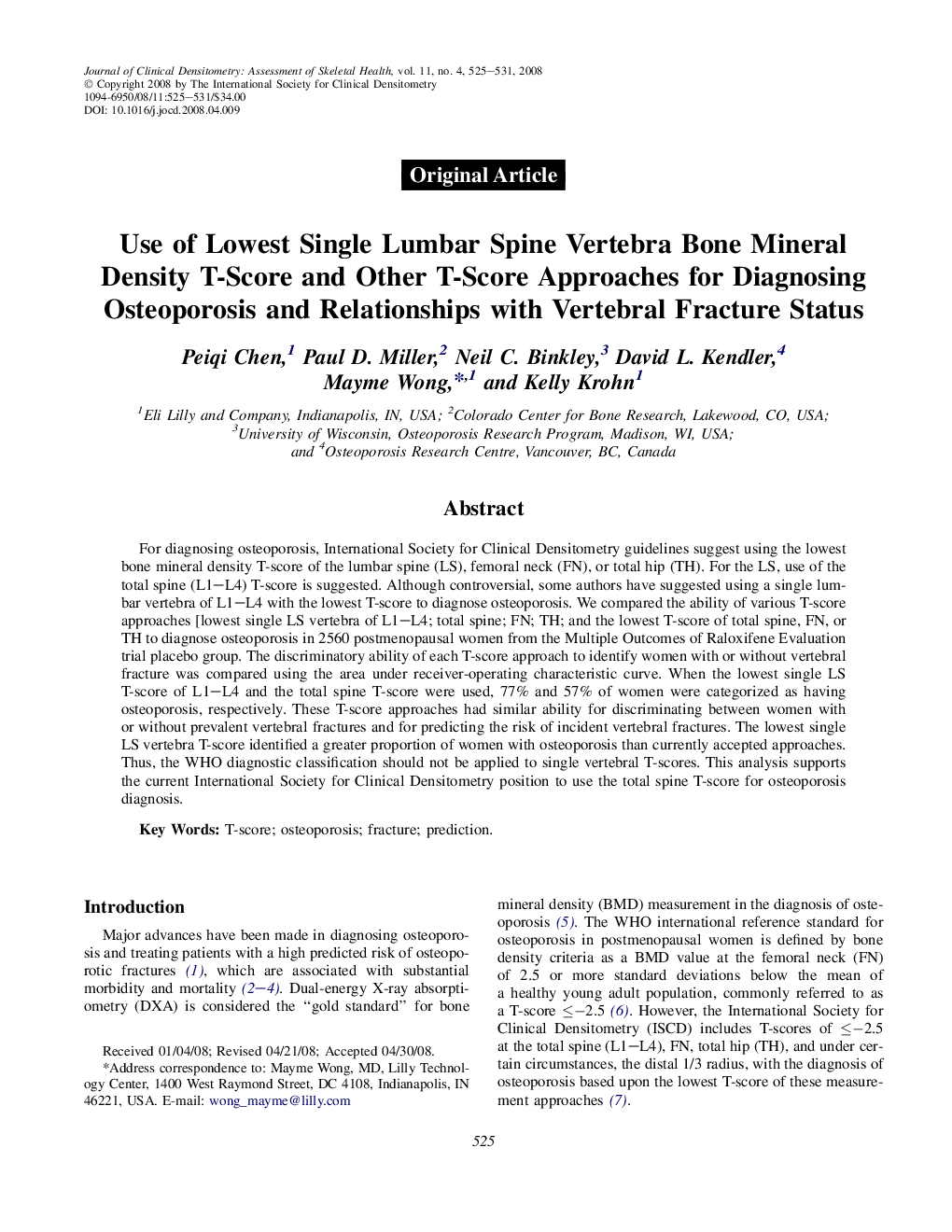| Article ID | Journal | Published Year | Pages | File Type |
|---|---|---|---|---|
| 3271351 | Journal of Clinical Densitometry | 2008 | 7 Pages |
Abstract
For diagnosing osteoporosis, International Society for Clinical Densitometry guidelines suggest using the lowest bone mineral density T-score of the lumbar spine (LS), femoral neck (FN), or total hip (TH). For the LS, use of the total spine (L1-L4) T-score is suggested. Although controversial, some authors have suggested using a single lumbar vertebra of L1-L4 with the lowest T-score to diagnose osteoporosis. We compared the ability of various T-score approaches [lowest single LS vertebra of L1-L4; total spine; FN; TH; and the lowest T-score of total spine, FN, or TH to diagnose osteoporosis in 2560 postmenopausal women from the Multiple Outcomes of Raloxifene Evaluation trial placebo group. The discriminatory ability of each T-score approach to identify women with or without vertebral fracture was compared using the area under receiver-operating characteristic curve. When the lowest single LS T-score of L1-L4 and the total spine T-score were used, 77% and 57% of women were categorized as having osteoporosis, respectively. These T-score approaches had similar ability for discriminating between women with or without prevalent vertebral fractures and for predicting the risk of incident vertebral fractures. The lowest single LS vertebra T-score identified a greater proportion of women with osteoporosis than currently accepted approaches. Thus, the WHO diagnostic classification should not be applied to single vertebral T-scores. This analysis supports the current International Society for Clinical Densitometry position to use the total spine T-score for osteoporosis diagnosis.
Related Topics
Health Sciences
Medicine and Dentistry
Endocrinology, Diabetes and Metabolism
Authors
Peiqi Chen, Paul D. Miller, Neil C. Binkley, David L. Kendler, Mayme Wong, Kelly Krohn,
